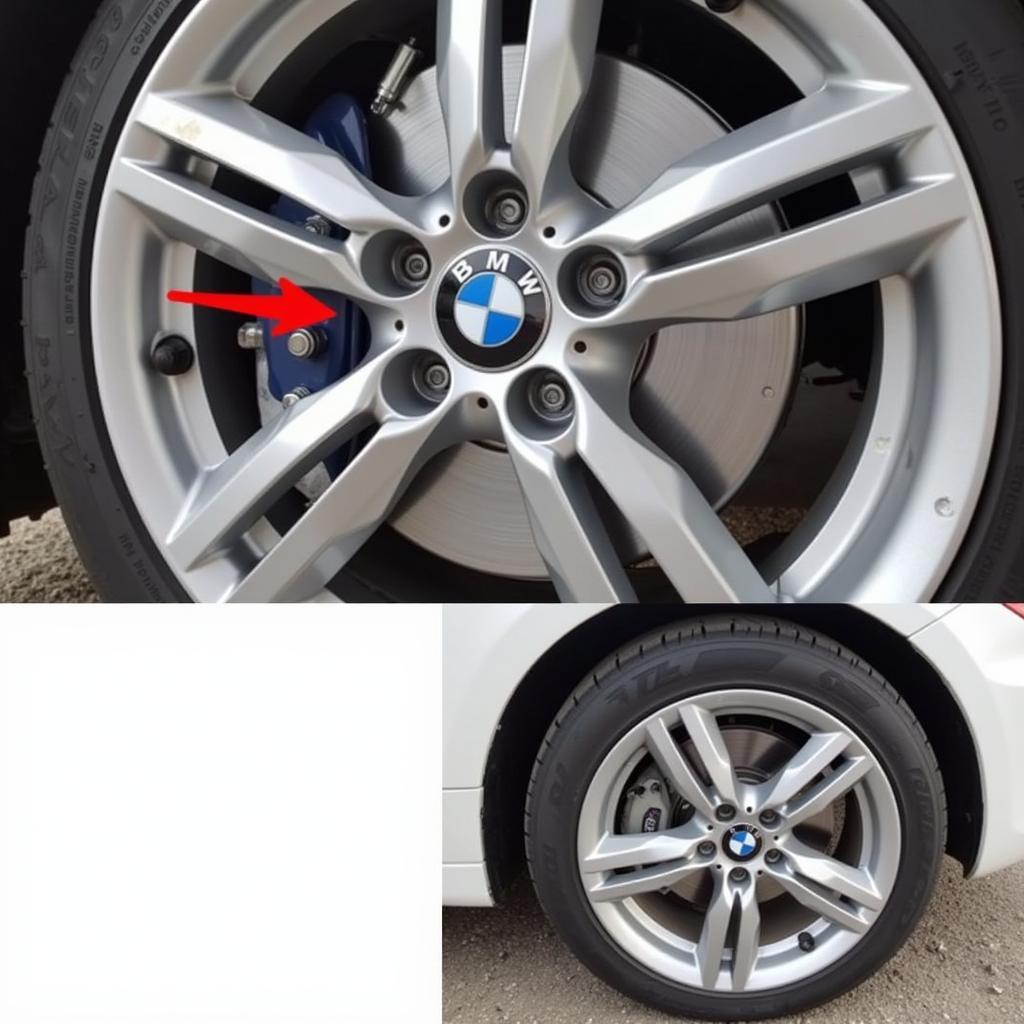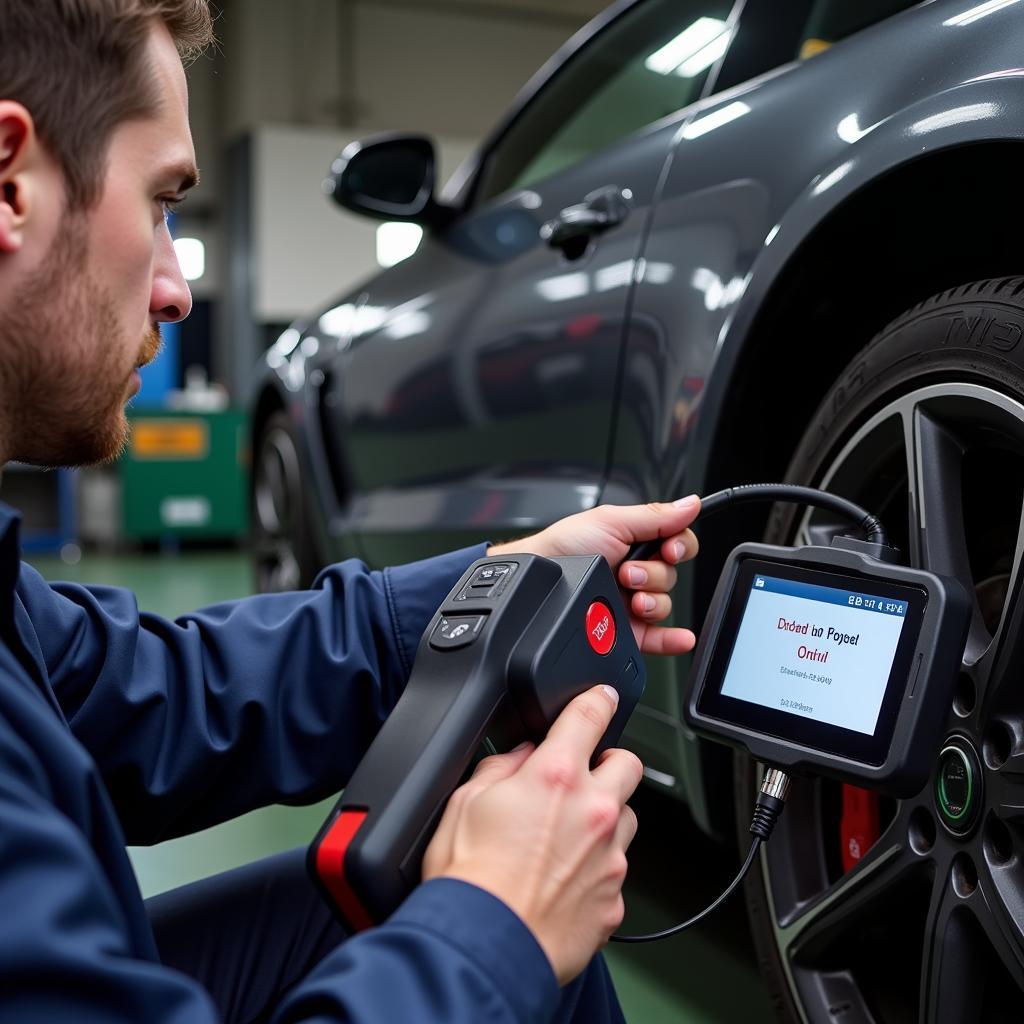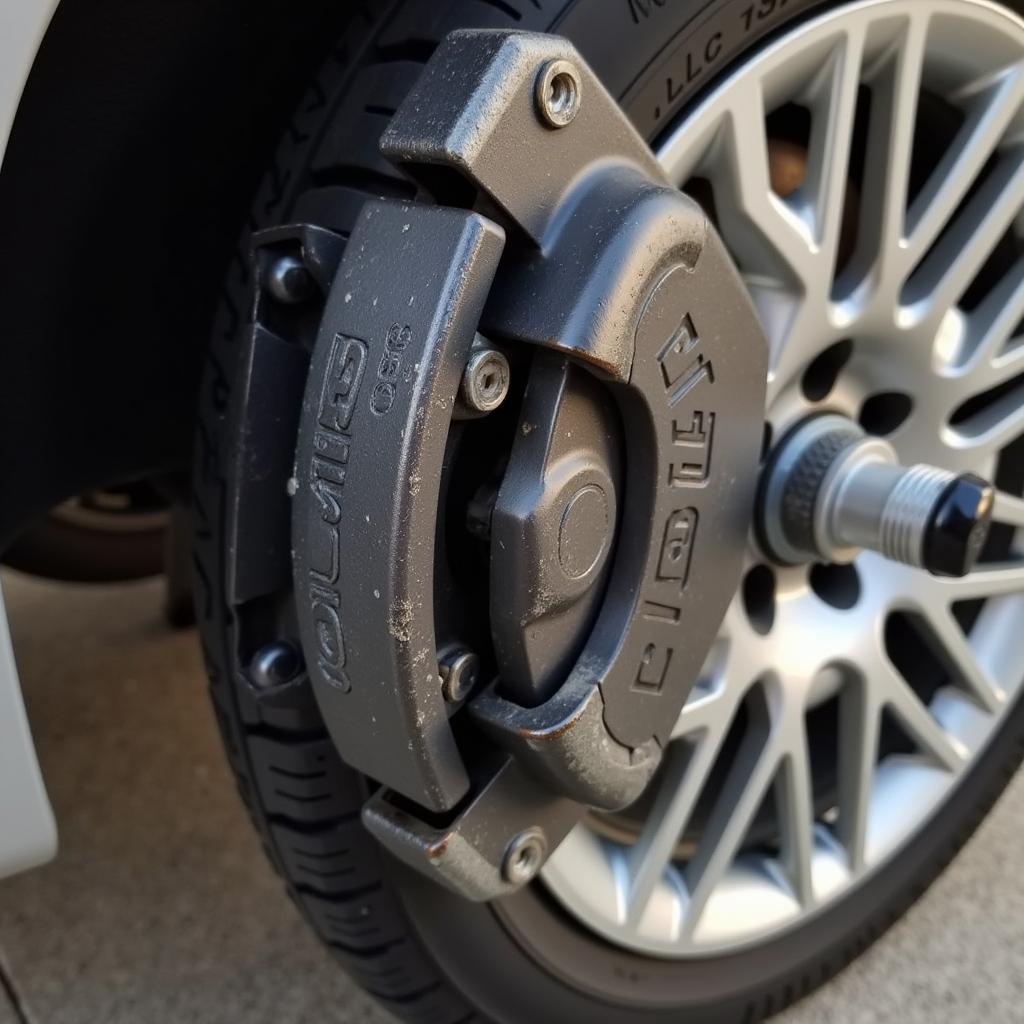Seeing those yellow or red warning lights illuminate on your BMW dashboard can be unsettling. While they might induce a moment of panic, it’s important to remember they are your car’s way of communicating a potential problem. The ABS, DSC, and brake warning lights are particularly important as they relate directly to your vehicle’s ability to stop safely. This article will guide you through the common causes of these warning lights and provide insights into how to address them.
Decoding the Warning Lights: ABS, DSC, and Brake
Let’s start by understanding what triggers each warning light:
- ABS (Anti-lock Braking System) light: This light, often appearing as a circle with “ABS” inscribed, indicates an issue with the anti-lock braking system. The ABS system prevents wheel lockup during hard braking, allowing you to maintain steering control.
- DSC (Dynamic Stability Control) light: This light, typically depicting a car with skid marks, signifies a problem with your BMW’s stability control system. DSC helps prevent skids and maintains traction by automatically applying brakes and adjusting engine power when it detects a loss of control.
- Brake warning light: This universal symbol, a circle with an exclamation mark (!) inside, can point to a range of braking system issues. It often illuminates alongside the ABS or DSC light, adding another layer of urgency.
 BMW Dashboard Warning Lights
BMW Dashboard Warning Lights
Common Causes of Warning Lights
The simultaneous illumination of the ABS, DSC, and brake warning lights usually suggests a problem affecting multiple systems. Here are some of the most common culprits:
-
Faulty Wheel Speed Sensors: These sensors, located at each wheel, play a vital role in both ABS and DSC systems. They constantly monitor wheel speed, relaying information to the car’s computer. A malfunctioning or dirty sensor can disrupt this data flow, triggering the warning lights.
-
Worn Brake Pads: While seemingly unrelated to ABS and DSC, worn brake pads can indirectly trigger these warning lights. Thin brake pads can cause the brake fluid level to drop, potentially affecting the ABS system. Additionally, some BMW models link brake pad wear sensors to the DSC system.
-
Low Brake Fluid: Brake fluid is the lifeblood of your braking system, transmitting force from the brake pedal to the wheels. A leak in the brake lines or a critically low fluid level can impact braking performance and trigger warning lights.
-
Problem with the ABS Module: The ABS module is the brain behind the anti-lock braking system. Over time, this module can experience electrical faults or malfunctions, leading to a cascade of warning lights.
-
Steering Angle Sensor Malfunction: The steering angle sensor communicates the position of your steering wheel to the DSC system. A faulty sensor can disrupt this communication, leading to incorrect stability control interventions and ultimately triggering warning lights.
 BMW Wheel Speed Sensor Location
BMW Wheel Speed Sensor Location
What to Do When the Lights Come On
If you encounter the dreaded trio of ABS, DSC, and brake warning lights on your BMW, follow these steps:
-
Stay Calm and Assess: Avoid panic. Safely pull over to a safe location as soon as possible.
-
Check Brake Fluid Level: Carefully open the brake fluid reservoir (refer to your owner’s manual for location). If the fluid level is low, adding brake fluid might temporarily resolve the issue, allowing you to drive to a mechanic. However, this is often a sign of a leak, requiring immediate professional attention.
-
Avoid Driving (If Possible): If the brake pedal feels spongy or the warning lights remain on even after adding brake fluid, it’s best to avoid driving your BMW. Continuing to drive with a compromised braking system can be extremely dangerous.
-
Seek Professional Diagnosis: Contact a qualified BMW mechanic or dealership for a comprehensive diagnostic scan. They have the specialized tools and expertise to pinpoint the exact cause of the warning lights and recommend the necessary repairs.
“Ignoring warning lights related to your braking system is never a good idea,” warns Mark Stevenson, a senior BMW technician with over 20 years of experience. “These systems are crucial for your safety and the safety of others on the road.”
Remote Software Solutions: A Modern Approach
In some instances, the issue triggering the ABS, DSC, and brake warning lights might stem from a software-related glitch rather than a mechanical failure. This is where remote diagnostics and software solutions come into play.
Specialized technicians can remotely access your BMW’s computer system to diagnose the problem. If the issue lies within the software, they may be able to reprogram or update the system remotely, potentially resolving the issue without requiring a physical visit to the workshop.
“Remote software solutions are becoming increasingly prevalent in modern BMWs,” explains **Stevenson.** “It allows us to diagnose and address certain issues more efficiently, potentially saving our customers time and money."  Remote Diagnostics of BMW
Remote Diagnostics of BMW
Conclusion
The illumination of your BMW’s ABS, DSC, and brake warning lights should never be ignored. While the underlying cause could be a minor sensor issue, it could also signify a more serious problem within your braking system. Remember, a timely diagnosis by a qualified BMW technician is crucial for ensuring your safety and the longevity of your vehicle. By addressing the issue promptly, you can confidently get back on the road, knowing your BMW is equipped to handle whatever driving conditions come your way.


